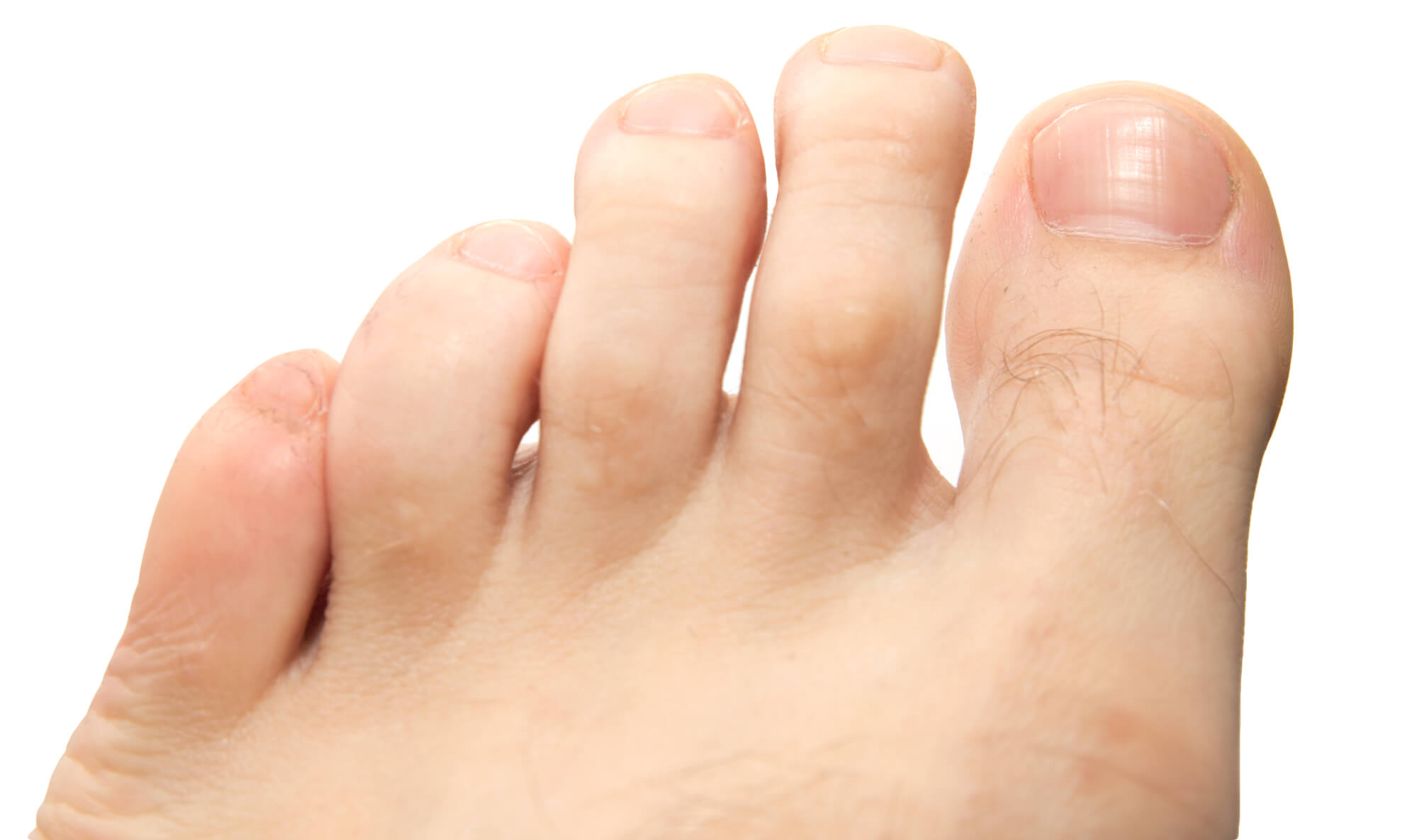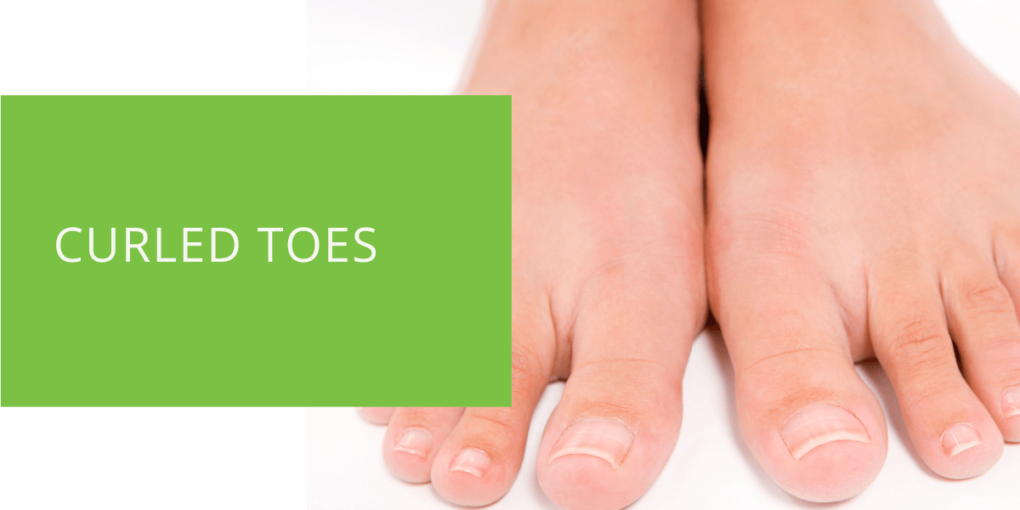Understanding Curled Toes
Our feet are the foundation of our body, yet we often neglect them until a problem arises. One such issue that often goes unnoticed until it becomes painful and debilitating is curled toes. This condition can affect anyone, and it can be caused by various factors such as genetics, poor-fitting shoes, and nerve damage. Curled toes can affect our foot and ankle health, causing discomfort and making walking or standing difficult for extended periods.
If you're experiencing curled toes, don't worry - you're not alone, and various treatments are available. This comprehensive guide will explore everything you need to know about curled toes, including the different types of toe deformities such as claw toe, mallet toe, and hammertoe. We will also discuss the symptoms, causes, and available treatments for each type of toe deformity so you can make informed decisions about your foot and ankle health. Our goal is to provide you with the expertise of podiatrists so you can address your toe deformities and enjoy a pain-free life.
Key Takeaways
- Curled toes, including claw toes, mallet toes, and hammertoes, can cause pain and discomfort, often stemming from genetics, improper footwear, and muscle imbalances.
- Podiatrists offer non-surgical and surgical treatment options, such as orthotic devices, physical therapy, tendon releases, and joint fusions, to address curled toe deformities effectively.
- Prevention, including wearing appropriate footwear and maintaining foot health, can reduce the risk of developing curled toes while seeking professional evaluation and treatment, which is crucial for those already experiencing symptoms.
The Anatomy of the Toe
To comprehend curled toes and their treatment, it's crucial to start with the basics—the anatomy of the toe. Each toe comprises tendons, muscles, and ligaments that work harmoniously to provide balance and mobility. Proper alignment of these components is key to maintaining healthy toes. Any deviation from this alignment can lead to issues like curled toes.
Types of Curled Toes
Claw Toe
The claw toe is one of the most common toe deformities. It's characterized by an abnormal toe bending at the middle joint, causing it to resemble a claw. The symptoms may include pain, discomfort, and difficulty fitting into shoes, especially those with narrow toe boxes. Causes can range from genetics to wearing high heels and tight shoes, which put excess pressure on the toes.
Mallet Toe
Mallet toe, on the other hand, primarily affects the joint at the tip of the toe. It causes the toe to bend downward, creating a hammer-like appearance. Like claw toes, wearing ill-fitting shoes, particularly high heels, is a common cause. It can also result from an imbalance in the muscles and tendons that control toe movement.
Hammertoes
Hammertoes are similar to mallet toes but affect the toe's middle joint. They can be flexible or rigid and may cause corns or calluses due to friction against footwear. Hammertoes can be hereditary or develop over time due to factors such as arthritis or trauma to the toe.
Symptoms and Causes of Curled Toes
Curled toes can lead to various discomforts, including pain, corns, and calluses. The causes may vary, but common factors include:
- Genetics: Family history can predispose individuals to toe deformities.
- Improper Footwear: Wearing shoes with narrow toe boxes or high heels can force toes into unnatural positions.
- Muscle and Tendon Imbalances: Weak or tight muscles and tendons can contribute to curled toes.
- Arthritis: Inflammatory conditions like arthritis can affect toe joints.
- Trauma: Injuries to the toe can result in deformities over time.
Diagnosis and Evaluation
If you suspect you have curled toes or are experiencing discomfort, it's essential to seek professional evaluation from a podiatrist. They will conduct a thorough examination, which may include imaging such as X-rays, to determine the severity of the condition and the best treatment approach.

Treatment Options for Curled Toes
Non-Surgical Approaches
Podiatrists often start with non-surgical treatments to address curled toes. These may include:
- Orthotic Devices: Custom-made inserts can help correct toe alignment and reduce discomfort.
- Footwear Recommendations: Choosing appropriate shoes with adequate toe room and arch support can alleviate pressure on curled toes.
- Physical Therapy: Targeted exercises and stretches can strengthen the muscles and improve flexibility.
Surgical Interventions
In more severe cases, surgical intervention may be necessary. Podiatrists can perform various surgical techniques to correct curled toes, including:
- Tendon Releases: Lengthening or releasing tight tendons can help straighten the toe.
- Joint Fusions: Fusing the toe joint in a corrected position can provide long-term stability.
- Joint Implants: In some instances, joint implants may replace damaged joints.
Preventing Curled Toes
Prevention is always better than cure. To reduce the risk of developing curled toes:
- Choose footwear with ample toe room and low heels.
- Maintain a healthy weight to reduce excess pressure on your toes.
- Stretch and exercise your toes regularly to keep muscles and tendons flexible.
Fixing Curled Toes: What to Expect
If you're considering treatment for your curled toes, setting realistic expectations is essential. The treatment outcome can vary depending on the severity of the condition and the chosen method. Your podiatrist will guide you on what to expect during and after treatment.
Conclusion
Curled toes can significantly impact your foot and ankle health, but with the expertise of our podiatrists, you can find relief and restore the function and appearance of your toes. Don't let curled toes keep you from enjoying a pain-free, active lifestyle. Schedule an appointment with us today, and let us help you take the first step towards healthier, happier feet.
FAQ
What causes curled toes?
Curled toes can be caused by various factors, including genetics, wearing ill-fitting shoes (especially high heels), muscle and tendon imbalances, arthritis, and even trauma to the toe.
What does curling my toes mean?
Curling your toes involuntarily may be a sign of muscle or nerve issues. However, in the context of this article, we refer to curled toes as a physical deformity where the toes bend or contract unnaturally.
How do I get rid of my curling toes?
The treatment for curled toes depends on the severity of the condition. Non-surgical approaches include orthotic devices, proper footwear, and physical therapy. Surgical interventions like tendon releases or joint fusions may be necessary in more severe cases.
Can you straighten your toes?
Yes, in many cases, podiatrists can help straighten curled toes through various treatment options, both non-surgical and surgical, depending on the individual's condition.
How do I stop my toes from curling?
Preventing curled toes involves choosing appropriate footwear with sufficient toe room, maintaining a healthy weight, and regularly stretching and exercising your toes to keep the muscles and tendons flexible. If you are experiencing symptoms, seeking professional evaluation and treatment is essential to stop the progression of curled toes.

